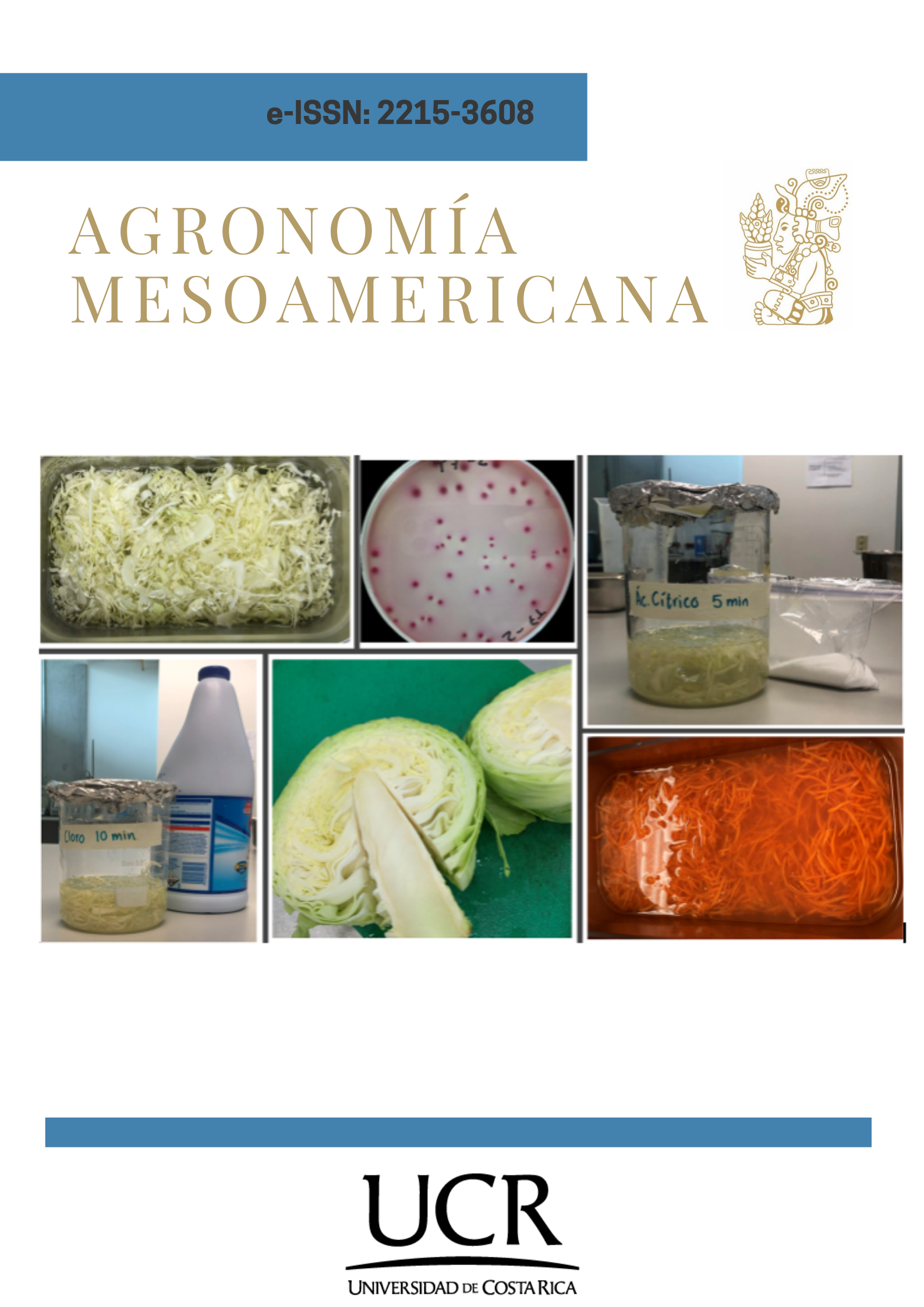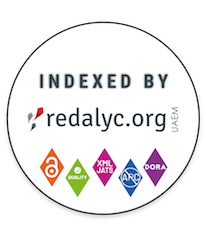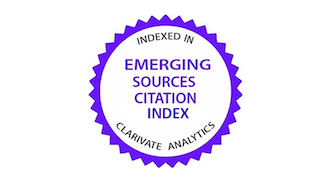Use of organic acids for reduction of microorganisms in shredded cabbage (Brassica oleracea) and carrot (Daucus carota)
DOI:
https://doi.org/10.15517/am.2024.59834Keywords:
citric acid, lactic acid, desinfection, Escherichia coli, Listeria monocytogensAbstract
Introduction. Alternative disinfection processes for fresh and minimally processed vegetables have been studied recently. Methods such as the use of organic acids can reduce microbial loads in foods. Objective. To evaluate the use of citric and lactic acids at different concentrations in reducing Escherichia coli and Listeria monocytogenes in shredded cabbage and carrot. Materials and methods. The study was conducted in San José, Costa Rica, between September and November 2023. Carrots and cabbages were shredded, inoculated with E. coli and L. monocytogenes, and then disinfected using lactic or citric acid at concentrations of 5, 10 y 20 g l-1 for 5 min. After disinfection, logarithmic reductions were determined, and orthogonal contrast and Bonferroni test were applied to evaluate the effect of the acids in comparison to the water control, the differences in the reduction between acids, and effect of the acid concentration. Results. In both carrot and cabbage, logarithmic reductions of E. coli between 2 and 5 log CFU/g were determined. Greater reductions were generally found at 20 g l-1 compared to 5 g l-1, and for lactic acid compared to citric acid. For L. monocytogenes in carrots, no reduction could be determined, however, in cabbage, reductions between 1,2 and 2,4 log CFU/g were determined, with higher reductions at 20 g l-1 compared to 5 g l-1 and for lactic acid compared to citric acid. Conclusions. Under studied concentration and time conditions, lactic and citric acids can be used in disinfection processes for shredded cabbage and carrot, achieving reductions of at least 2 log CFU/g.
Downloads
References
Adams, M. R., Moss, M. O., & McClure, P. (2016). Food microbiology (4th ed.). The Royal Society of Chemistry.
Akbas, M. Y., & Ölmez, H. (2007). Inactivation of Escherichia coli and Listeria monocytogenes on iceberg lettuce by dip wash treatments with organic acids. Letters in Applied Microbiology, 44(6), 619–624. https://doi.org/10.1111/J.1472-765X.2007.02127.X
Alenyorege, E. A., Ma, H., Ayim, I., Aheto, J. H., Hong, C., & Zhou, C. (2019). Reduction of Listeria innocua in fresh-cut Chinese cabbage by a combined washing treatment of sweeping frequency ultrasound and sodium hypochlorite. LWT, 101, 410–418. https://doi.org/10.1016/j.lwt.2018.11.048
Amrutha, B., Sundar, K., & Shetty, P. H. (2017). Effect of organic acids on biofilm formation and quorum signaling of pathogens from fresh fruits and vegetables. Microbial pathogenesis, 111, 156–162. https://doi.org/10.1016/j.micpath.2017.08.042
Bae, Y. M., Choi, N. Y., Heu, S., Kang, D. H., & Lee, S. Y. (2011). Inhibitory effects of organic acids combined with modified atmosphere packaging on foodborne pathogens on cabbage. Journal of the Korean Society for Applied Biological Chemistry, 54(6), 993–997. https://doi.org/10.1007/BF03253191
Batt, C. (2014). ESCHERICHIA COLI | Escherichia coli. In C. A. Batt, & M. Tortorello (Eds.), Encyclopedia of food microbiology (2nd ed., pp. 688–694). Academic Press. https://doi.org/10.1016/B978-0-12-384730-0.00100-2
Bermúdez-Aguirre, D., & Barbosa-Cánovas, G. V. (2013). Disinfection of selected vegetables under nonthermal treatments: chlorine, acid citric, ultraviolet light and ozone. Food Control, 29(1), 82–90. https://doi.org/10.1016/J.FOODCONT.2012.05.073
Beuchat, L. R., Farber, J. M., Harris, L. J., Parish, M. E., Suslow, T. V., Busta, F. F., & Garrett, E. H. (2001). Standardization of a method to determine the efficacy of sanitizers in inactivating human pathogenic microorganisms on raw fruits and vegetables. Journal of Food Protection, 64(7), 1079–1084. https://doi.org/10.4315/0362-028x-64.7.1079
Bhilwadikar, T., Pounraj, S., Manivannan, S., Rastogi, N. K., & Negi, P. S. (2019). Decontamination of microorganisms and pesticides from fresh fruits and vegetables: a comprehensive review from common household processes to modern techniques. Comprehensive Reviews in Food Science and Food Safety, 18(4), 1000–1038. https://doi.org/10.1111/1541-4337.12453
Bolten, S., Mowery, J., Gu, G., Redding, M., Kroft, B., Luo, Y., & Nou, X. (2023). Listeria monocytogenes loss of cultivability on carrot is associated with the formation of mesosome-like structures. International Journal of Food Microbiology, 390, Article 110121. https://doi.org/10.1016/j.ijfoodmicro.2023.110121
Botondi, R., Barone, M., & Grasso, C. (2021). A review into the effectiveness of ozone technology for improving the safety and preserving the quality of fresh-cut fruits and vegetables. Foods, 10(4), Article 748. https://doi.org/10.3390/FOODS10040748
Carstens, C. K., Salazar, J. K., & Darkoh, C. (2019). Multistate outbreaks of foodborne illness in the United States associated with fresh produce from 2010 to 2017. Frontiers in microbiology, 10, Article 2667. https://doi.org/10.3389/FMICB.2019.02667
Chang, J. (2015). Food safety research for fresh produce [Master of science thesis, Purdue University]. Purdue Open Access Thesis. https://docs.lib.purdue.edu/open_access_theses/1098
Chinchkar, A. V., Singh, A., Singh, S. V., Acharya, A. M., & Kamble, M. G. (2022). Potential sanitizers and disinfectants for fresh fruits and vegetables: A comprehensive review. Journal of Food Processing and Preservation, 46, Article e16495. https://doi.org/10.1111/jfpp.16495
Coban, H. B. (2020). Organic acids as antimicrobial food agents: applications and microbial productions. Bioprocess and Biosystems Engineering, 43, 569–591. https://doi.org/10.1007/s00449-019-02256-w
Cruz Mendoza, I., Ortiz Luna, E., Dreher Pozo, M., Villavicencio Vásquez, M., Coello Montoya, D., Chuchuca Moran, G., Galarza Romero, L., Yépez, X., Salazar, R., Romero-Peña, M., & Coronel León, J. (2022). Conventional and non-conventional disinfection methods to prevent microbial contamination in minimally processed fruits and vegetables. LWT, 165, Article e113714. https://doi.org/10.1016/j.lwt.2022.113714
da Silva, N., Taniwaki, M., Junqueira, V., Silveira, N., Okazaki, M., & Romeiro Gomes, R. (2018). Microbiological examination methods of food and water: A laboratory manual (2nd ed.). CRC Press. https://doi.org/10.1201/9781315165011
Danyluk, M. D., Fatica, M. K., Brar, P. K., McEgan, R., Valadez, A. M., Schneider, K. R., & Trinetta, V. (2015). 50. Fruits and Vegetables. In Y. Salfinger, & L. Tortorello (Eds.), Compendium of methods for the microbiological examination of foods (5th ed., pp. 687–696). American Public Health Association. https://doi.org/10.2105/MBEF.0222.055
De Corato, U. (2019). The market of the minimally processed fresh produce needs of safer strategies for improving shelf life and quality: a critical overview of the traditional technologies. Open Access Journal of Agricultural Research, 4(1), Article 000216. http://doi.org/10.23880/oajar-16000216
Deng, L. Z., Mujumdar, A. S., Pan, Z., Vidyarthi, S. K., Xu, J., Zielinska, M., & Xiao, H. W. (2020). Emerging chemical and physical disinfection technologies of fruits and vegetables: a comprehensive review. Critical Reviews in Food Science and Nutrition, 60(15), 2481–2508. https://doi.org/10.1080/10408398.2019.1649633
do Prado Vilarin, S., Rocha Teixeira, T. M., Gonçalves Lima, C. M., Pamplona Pagnossa, J., Mendonça de Figueiredo, R., Cardoso Medeiros, U. B., & Ferreira Santana, R. (2020). Effect of sanitization on minimally processed cabbage (Brassica oleracea L.). Research, Society and Development, 9(6), Article e59963467. https://doi.org/10.33448/rsd-v9i6.3467
Erickson, M. C. (2019). Microbiological issues associated with fruits, vegetables, nuts, and grains. In M. P. Doyle, F. Diez-Gonzalez, & C. Hill (Eds.), Food Microbiology: Fundamentals and Frontiers (pp. 179–206). ASM Press. https://doi.org/10.1128/9781555819972.ch7
Ferreira Gomes, B. A., Silveira Alexandre, A. C., Vieira de Andrade, G. A., Pereira Zanzini, A., Araújo de Barros, H. E., dos Santos Ferraz e Silva, L. M., Aparecida Costa, P., & de Barros Vilas Boas, E. V. (2023). Recent advances in processing and preservation of minimally processed fruits and vegetables: a review – part 2: physical methods and global market outlook. Food Chemistry Advances, 2, Article e100304. https://doi.org/10.1016/j.focha.2023.100304
Giaouris, E., Chorianopoulos, N., & Nychas, G. J. (2014). Acquired acid adaptation of Listeria monocytogenes during its planktonic growth enhances subsequent survival of its sessile population to disinfection with natural organic compounds. Food Research International, 64, 896–900. https://doi.org/10.1016/j.foodres.2014.08.044
Jnani, D., & Ray, S. D. (2024). Escherichia coli. In P. Wexler (Ed.), Encyclopedia of toxicology (4th ed., pp 357–367). Elsevier. https://doi.org/10.1016/B978-0-12-824315-2.00190-1
Khan, I., Tango, C. N., Miskeen, S., Lee, B. H., & Oh, D. H. (2017). Hurdle technology: A novel approach for enhanced food quality and safety – A review. Food Control, 73, 1426–1444. https://doi.org/10.1016/j.foodcont.2016.11.010
Koseki, S., Yoshida, K., Kamitani, Y., & Itoh, K. (2003). Influence of inoculation method, spot inoculation site, and inoculation size on the efficacy of acidic electrolyzed water against pathogens on lettuce. Journal of Food Protection, 66(11), 2010–2016. https://doi.org/10.4315/0362-028x-66.11.2010
Law, J. W.-F., Ab Mutalib, N.-S., Chan, K.-G., & Lee, L.-H. (2015). An insight into the isolation, enumeration, and molecular detection of Listeria monocytogenes in food. Frontiers in Microbiology, 6, Article 1227. https://doi.org/10.3389/fmicb.2015.01227
Lee, H. H., Hong, S. I., & Kim, D. (2014). Microbial reduction efficacy of various disinfection treatments on fresh-cut cabbage. Food Science and Nutrition, 2(5), 585–590. https://doi.org/10.1002/fsn3.138
Liu, C., Chen, C., Jiang, A., Zhang, Y., Zhao, Q., & Hu, W. (2021). Effects of aqueous ozone treatment on microbial growth, quality, and pesticide residue of fresh-cut cabbage. Food Science and Nutrition, 9(1), 52–61. https://doi.org/10.1002/FSN3.1870
Ma, T., Luo, J., Tian, C., Sun, X., Quan, M., Zheng, C., Kang, L., & Zhan, J. (2015). Influence of technical processing units on chemical composition and antimicrobial activity of carrot (Daucus carrot L.) juice essential oil. Food Chemistry, 170, 394–400. https://doi.org/10.1016/j.foodchem.2014.08.018
Ma, L., Zhang, M., Bhandari, B., & Gao, Z. (2017). Recent developments in novel shelf-life extension technologies of fresh-cut fruits and vegetables. Trends in Food Science & Technology, 64, 23–38. https://doi.org/10.1016/j.tifs.2017.03.005
Meireles, A., Giaouris, E., & Simões, M. (2016). Alternative disinfection methods to chlorine for use in the fresh-cut industry. Food Research International, 82, 71-85. https://doi.org/10.1016/J.FOODRES.2016.01.021
Noriega, E., Newman, J., Saggers, E., Robertson, J., Laca, A., Díaz, M., & Brocklehurst, T. M. (2010). Antilisterial activity of carrots: Effect of temperature and properties of different carrot fractions. Food Research International, 43(10), 2425–2431. https://doi.org/10.1016/j.foodres.2010.09.012
Park, S. H., Choi, M. R., Park, J. W., Park, K. H., Chung, M. S., Ryu, S., & Kang, D. H. (2011). Use of organic acids to inactivate Escherichia coli O157: H7, Salmonella typhimurium, and Listeria monocytogenes on organic fresh apples and lettuce. Journal of Food Science, 76(6), 293–298. https://doi.org/10.1111/J.1750-3841.2011.02205.X
Petri, E., Rodríguez, M., & García, S. (2015). Evaluation of combined disinfection methods for reducing Escherichia coli O157:H7 population on fresh-cut vegetables. International Journal of Environmental Research and Public Health, 12(8), 8678–8690. https://doi.org/10.3390/ijerph120808678
Pinela, J., & Ferreira, I. C. F. R. (2017). Nonthermal physical technologies to decontaminate and extend the shelf-life of fruits and vegetables: Trends aiming at quality and safety. Critical Reviews in Food Science and Nutrition, 57(10), 2095–2111. https://doi.org/10.1080/10408398.2015.1046547
Petran, R. L., Grieme, L. E., & Foong-Cunningham, S. (2015). 6. Culture methods for enumeration of microorganisms. In Y. Salfinger, & M. L. Tortorello (Eds.), Compendium of methods for the microbiological examination of foods (5th ed.). American Public Health Association. https://doi.org/10.2105/MBEF.0222.011
Pounraj, S., Bhilwadikar, T., Manivannan, S., Rastogi, N. K., & Negi, P. S. (2021). Effect of ozone, lactic acid and combination treatments on the control of microbial and pesticide contaminants of fresh vegetables. Journal of the Science of Food and Agriculture, 101(8), 3422–3428. https://doi.org/10.1002/JSFA.10972
Sagong, H. G., Lee, S. Y., Chang, P. S., Heu, S., Ryu, S., Choi, Y. J., & Kang, D. H. (2011). Combined effect of ultrasound and organic acids to reduce Escherichia coli O157:H7, Salmonella Typhimurium, and Listeria monocytogenes on organic fresh lettuce. International Journal of Food Microbiology, 145(1), 287–292. https://doi.org/10.1016/j.ijfoodmicro.2011.01.010
Sango, D. M., Abela, D., McElhatton, A., & Valdramidis, V. P. (2014). Assisted ultrasound applications for the production of safe foods. Journal of Applied Microbiology, 116(5), 1067–1083. https://doi.org/10.1111/JAM.12468
Sarron, E., Gadonna-Widehem, P., & Aussenac, T. (2021). Ozone treatments for preserving fresh vegetables quality: a critical review. Foods, 10(3), Article 605. https://doi.org/10.3390/foods10030605
Silveira Alexandre, A. C., Ferreira Gomes, B. A., Nayara Duarte, G., Fabiane Piva, S., Barros Zauza, S., & de Barros Vilas Boas, E. V. (2022). Recent advances in processing and preservation of minimally processed fruits and vegetables: a review – part 1: fundamentals and chemical methods. Journal of Food Processing and Preservation, 46(8), Article e16757. https://doi.org/10.1111/jfpp.16757
Tzortzakis, N., & Chrysargyris, A. (2017). Postharvest ozone application for the preservation of fruits and vegetables. Food Reviews International, 33(3), 270–315. https://doi.org/10.1080/87559129.2016.1175015
Venkitanarayanan, K. S., Lin, C. M., Bailey, H., & Doyle, M. P. (2002). Inactivation of Escherichia coli O157:H7, Salmonella enteritidis, and Listeria monocytogenes on apples, oranges, and tomatoes by lactic acid with hydrogen peroxide. Journal of food protection, 65(1), 100–105. https://doi.org/10.4315/0362-028x-65.1.100
Wang, J., Wang, S., Sun, Y., Li, C., Li, Y., Zhang, Q., & Wu, Z. (2019). Reduction of Escherichia coli O157:H7 and naturally present microbes on fresh-cut lettuce using lactic acid and aqueous ozone. RSC Advances, 9, 22636–22643. https://doi.org/10.1039/C9RA03544C
Wijayasinghe, R., Bogahawaththa, D., Huppertz, T., Chandrapala, J., & Vasiljevic, T. (2019). Influence of lactic, citric and phosphoric acids on the properties of concentrated lactose solutions. Food Chemistry, 293, 247–253. https://doi.org/10.1016/j.foodchem.2019.04.065
Wirtanen, G., & Salo, S. (2016). Chapter 5 - Biofilm risks. In H. Lelieveld, J. Holah, & D. Gabrić (Eds.), Handbook of hygiene control in the food industry (2nd ed., pp 55–79). Woodhead Publishing. https://doi.org/10.1016/B978-0-08-100155-4.00005-4
Yoon, J. H., & Lee, S. Y. (2018). Review: Comparison of the effectiveness of decontaminating strategies for fresh fruits and vegetables and related limitations. Critical Reviews in Food Science and Nutrition, 58, 3189–3208. https://doi.org/10.1080/10408398.2017.1354813
Zhang, S., & Farber, J. M. (1996). The effects of various disinfectants against Listeria monocytogenes on fresh-cut vegetables. Food Microbiology, 13(4), 311–321. https://doi.org/10.1006/fmic.1996.0037

Downloads
Additional Files
Published
How to Cite
Issue
Section
License
Copyright (c) 2024 Dayana Ruiz-Lobo, Gabriela Davidovich-Young, Eric Wong-González, Shanti Ramakrishna-Loaiza

This work is licensed under a Creative Commons Attribution-NonCommercial-NoDerivatives 4.0 International License.
1. Proposed policy for open access journals
Authors who publish in this journal accept the following conditions:
a. Authors retain the copyright and assign to the journal the right to the first publication, with the work registered under the attribution, non-commercial and no-derivative license from Creative Commons, which allows third parties to use what has been published as long as they mention the authorship of the work and upon first publication in this journal, the work may not be used for commercial purposes and the publications may not be used to remix, transform or create another work.
b. Authors may enter into additional independent contractual arrangements for the non-exclusive distribution of the version of the article published in this journal (e.g., including it in an institutional repository or publishing it in a book) provided that they clearly indicate that the work was first published in this journal.
c. Authors are permitted and encouraged to publish their work on the Internet (e.g. on institutional or personal pages) before and during the review and publication process, as it may lead to productive exchanges and faster and wider dissemination of published work (see The Effect of Open Access).



























